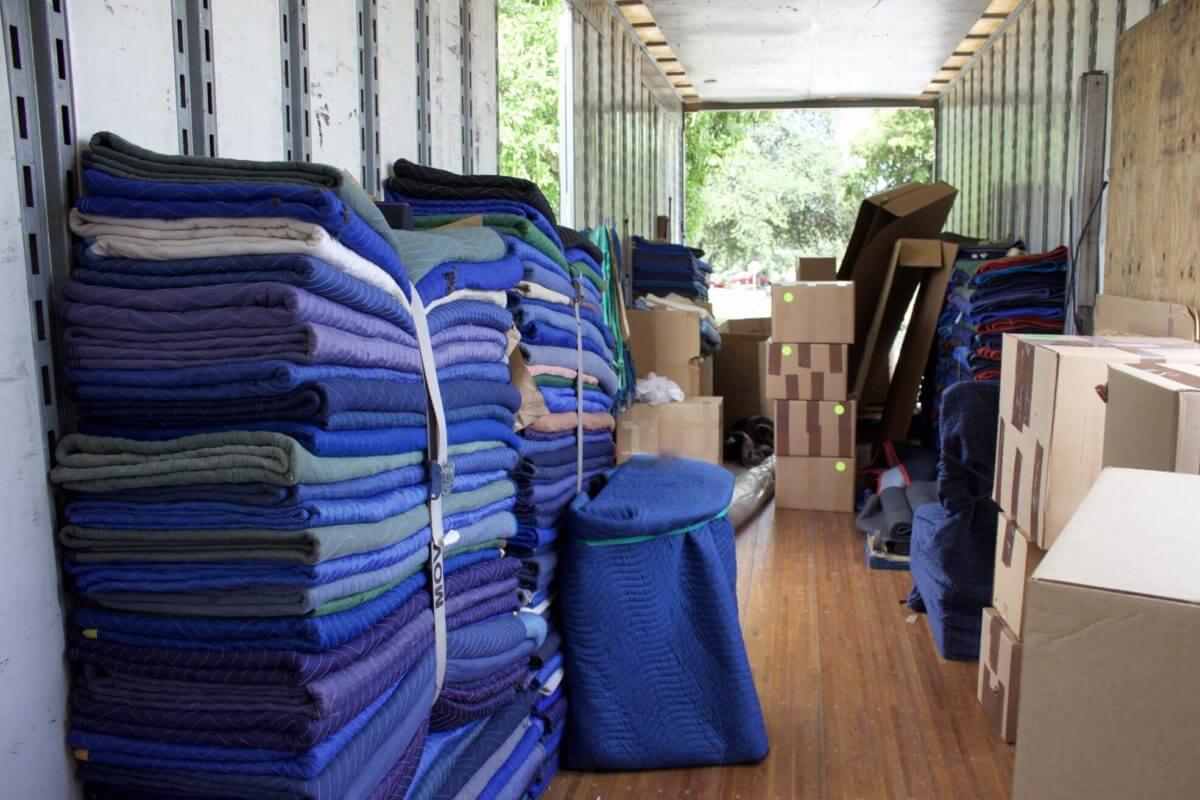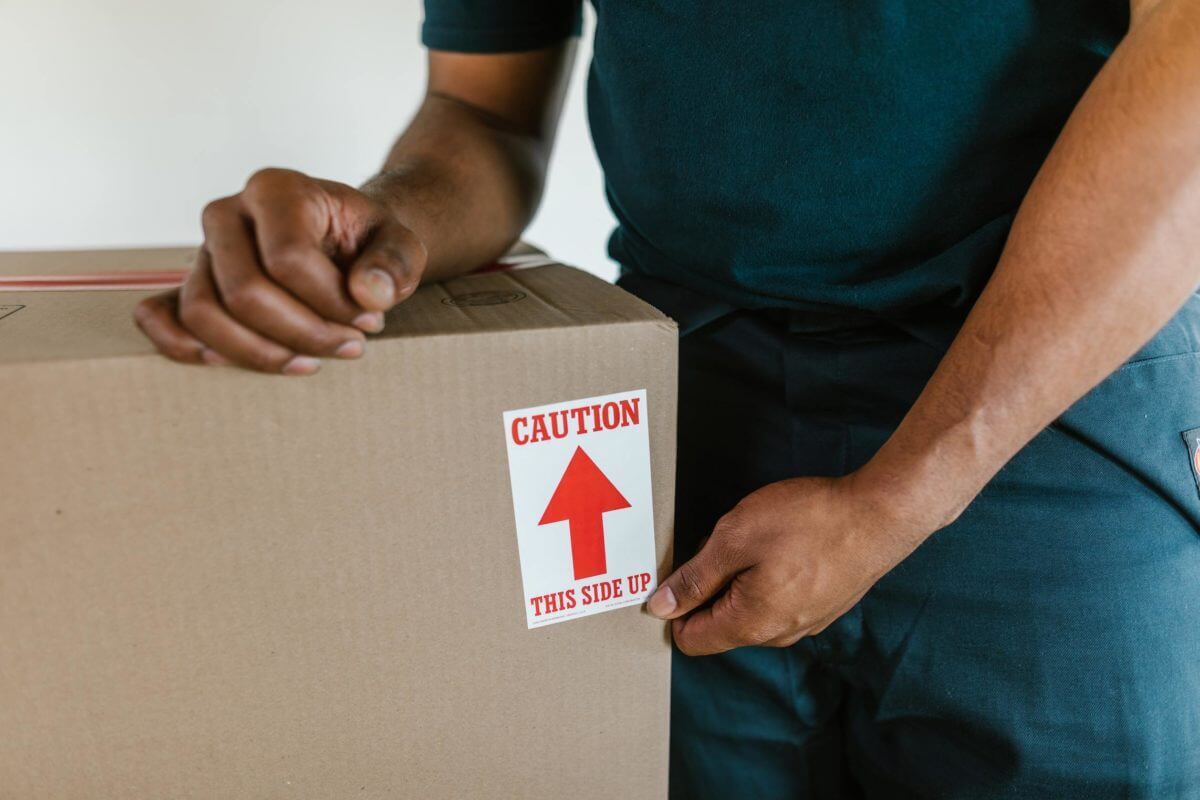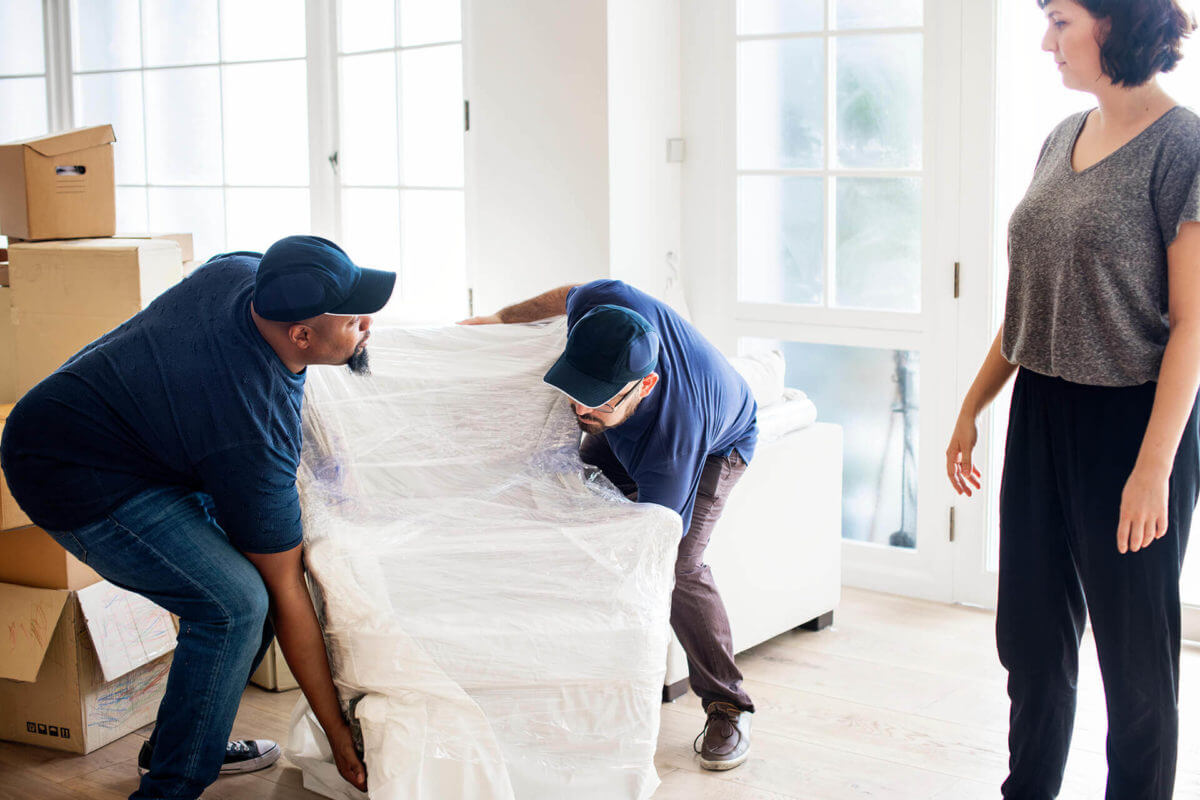When planning to relocate a rocking chair, gather the right packing materials and try to disassemble any removable parts. Wrap the chair in furniture blankets or bubble wrap to protect its surfaces from scratches and dings. If the chair has delicate or intricate detailing, consider using additional padding or foam to safeguard those areas. Secure the wrapping in place with packing tape.
How to Pack a Rocking Chair for Moving
Amidst the dimly lit attic, the old rocking chair creaked eerily, holding memories of tales once told. But as the time to move approached, a chilling challenge arose – how to pack a rocking chair for moving? Feeling the chill? In all seriousness, let’s dive into our guide and learn how to protect your beloved piece of furniture.


From Comfort to Chills: How Did the Rocking Chair Become a Horror Icon?
Rocking chairs, with their gentle sway and comforting design, have long held a special place in the heart of home interiors. Originally conceived for relaxation and even health benefits, these chairs have been a staple in households for centuries.
Yet, intriguingly, the once benign rocker has also carved an unexpected niche within the realm of horror cinema. The image of an eerily creaking object, moving by itself or under the weight of an unseen presence, has become synonymous with suspense and terror.
This dichotomy between comfort and fear is a testament to its versatility in cultural representation. As you prepare to relocate your rocker, it’s fascinating to reflect on its storied past and how it transitioned from a symbol of warmth and nostalgia to an icon of spine-chilling suspense.
What Materials You Need to Pack up the Furniture
Ensuring the safety and integrity of your furniture during a move is paramount. The right packing materials not only protect your valued items from physical damage but also from dust, moisture, and other environmental factors that might compromise their condition.
Inadequate or improper storing can lead to unnecessary relocation stress, financial loss, and disappointment upon arrival at your new destination. Equipping yourself with the right tools, patience, and different packing materials is the first step toward a successful relocation. Here’s the list of supplies and tools needed for an efficient boxing-up process:
- Furniture pads or moving blankets – these provide the primary defense for larger items.
- Clean paper – ideal for wrapping and padding, it prevents scratches and dents.
- Bubble wrap – offers cushioning against shocks and impacts.
- Stretch wrap or plastic wrap – Holds items together and shields against moisture and dust.
- Quality moving boxes or crates – for detachable components.
- Duct tape – essential for sealing boxes and securing wraps.
- Scissors or a box cutter – for adjusting and cutting wrapping materials.
- Marker and labels – essential for labeling, ensuring efficient unpacking after relocation.


How to Pack a Rocking Chair for Moving – Start With Preparation
Good preparation is not just a mere step. It’s the foundation of a successful and efficient relocation. Preparing your rocking chair streamlines the boxing-up process, reducing the chances of last-minute hitches and ensuring that it arrives at its new home in the same condition it left the old one.
Thorough Cleaning and Inspection
One of the foundational steps before moving any piece of furniture is ensuring it’s immaculately clean. This helps maintain the furniture’s longevity and prevents dirt or residues from transferring to other items during transit. By inspecting your rocker closely during the move-out cleaning, you can identify any vulnerabilities or existing damage that might need special attention or wrapping to prevent further deterioration during transit.
Dismantling for Easier Transit
Furniture is often easier to relocate when it’s broken down into its constituent parts. Not only does this make each piece lighter and more manageable, but it also allows for more compact packaging, reducing the risk of damage from movement or friction. However, it’s crucial to keep track of all screws, bolts, and other fasteners, preferably by sealing them in labeled plastic bags attached to the corresponding furniture component.
Take Photos for a Visual Inventory
In the chaos of moving cross-country, it’s easy to forget the exact condition of each item. Taking detailed photographs serves multiple purposes. Firstly, it provides a clear record, which is useful if you need to claim insurance due to any damages incurred during the move.
Secondly, these photos can assist in reassembling your dismantled rocker, acting as a reference point. Lastly, in the event of disputes with cross-country moving companies regarding damage, photographic evidence can be invaluable.


Mastering the Art of Wrapping Your Rocking Chair
A rocker, often steeped in memories and reflective of intricate craftsmanship, is not just another item on your moving checklist – it’s a delicate piece of history. The wrapping process, therefore, transcends beyond mere protection. It’s about preserving the chair’s essence, its legacy, and every delicate spindle and curve that makes it unique.
Neglecting this pivotal step might not only lead to physical damage but can also rob the item of its character and sentiment. Without further ado, let’s go over all the crucial steps for protecting your rocker.
Safeguarding Its Vulnerable Points
Every rocker has its points of vulnerability, and those areas are most susceptible to damage or wear. Notably, the arms, back, and intricate spindles are often the first to bear the brunt of any mishandling. To ensure these delicate parts remain unscathed, it’s crucial to cushion them individually for an added layer of protection.
Utilizing bubble wrap or packing paper can be an effective buffer against potential shocks and impacts. While securing them with duct tape is necessary to keep them in place, it’s essential to be cautious and avoid placing tape directly on the rocker’s surface to avoid stubborn adhesive marks or chipped paint.
Providing Ample Padding for Its Seat
This central element, often bearing the imprints of time and use, deserves special attention during the wrapping process. To shield it from potential dents, scratches, or structural damages, it’s imperative to provide ample padding. Using bubble wrap or foam sheets not only offers the necessary cushioning but also ensures that the seat’s integrity and comfort remain uncompromised throughout the relocation to a new home.
Pack the Detached Parts Separately
In the process of organizing your boxing-up process, disassembling certain components can make the relocation safer and more efficient. However, these detached parts, such as the runners, require their own set of care. Each part should be wrapped and labeled individually to guarantee its protection and streamlined reassembly process at the destination.
Ensuring Comprehensive Coverage for the Whole Item
While it’s essential to focus on its individual parts, providing a shield to the entire rocker is equally crucial. This comprehensive approach ensures that no component, no matter how seemingly insignificant, is left exposed to potential threats during transit.
Utilizing furniture pads or moving blankets offers a dense protective layer, safeguarding the item from external elements, abrasions, and sudden impacts. Once enveloped, securing these protective layers with stretch wrap and tape ensures the coverage remains snug and effective, leaving no room for untimely relocation mistakes.


Choose the Right Box for the Safe Relocation
If you’ve disassembled the rocker, choosing the appropriate storage is a step you don’t want to skip. The first action is to meticulously measure your item and note down the height, width, and depth of each component.
Understanding these dimensions is not only practical but is the cornerstone of selecting the best-size crate for the item. It ensures the chair parts fit snugly, minimizing excessive movement inside the box, which can lead to potential damage.
You Should Opt For Heavy-Duty Boxes
Heavy-duty boxes, constructed with reinforced materials, provide a heightened level of protection compared to their standard counterparts. Their primary advantage lies in their capability to handle both the weight and size of a rocker without buckling or tearing. Given the sturdiness and reliability these boxes offer, they minimize the risk of external damages, such as punctures or crushing.


Securing the Rocking Chair Parts in a Crate
Ensuring the safety of your item goes beyond just wrapping. The manner in which the rocker’s components are placed and secured within the container plays a pivotal role. Begin by creating a protective base within the crate. This can be achieved by laying down a layer of bubble wrap or crumpled paper, offering a cushioned platform for the item to rest upon.
As the wrapped parts are positioned inside, it’s vital to make sure they remain stationary, preventing any internal movements that could cause damage. If there’s any hint of mobility, fortify the empty spaces with additional cushioning for a stress-free relocation.
Moving
Our mission is to bring high quality, long distance moving services to every customer.
Packing
Our expert moving teams are trained to ensure the safety of your personal belongings.

Storage
Cross Country Moving Company is the most trusted name in auto industry in the country.
Proper Labeling and Taping is a Must
A box, regardless of its content, is just a box to a mover unless clearly labeled. Emphasizing its contents by labeling the crate with terms like “Handle with care,” “This side up,” and “Heavy” not only provides long-distance movers with an indication of the care required but also ensures the right positioning during transit.
Such proactive labeling reduces the risks associated with mishandling or incorrect stacking. Equally important is the sealing process. Using robust packing tape ensures that the contents remain protected from external elements and accidental openings.


Hire Cross Country Moving Company to Do the Heavy Lifting
At Cross Country Moving Company, we understand the intricacies and challenges of long-distance relocations. With our specialized long-distance moving services, we bring you the expertise and equipment essential for seamless shipping of your belongings over vast distances. We pride ourselves on taking the weight off your shoulders, both metaphorically and literally.
But our commitment doesn’t stop at just transporting your cherished rocker. Recognizing the importance of ensuring each item is packed with utmost care, our professional packing service is tailored to meet your specific needs. Trust in our proficiency so you can focus on the excitement of your new journey while we handle the heavy lifting.


Swaying and Rocking Forward to Your New Chapter
Every relocation represents a blend of nostalgia for the past and excitement for the future. Timeless treasures like rockers aren’t mere furniture as they cradle stories of yesteryears. As we help you transition, we’ll help you ensure these stories are preserved and transported with utmost care.
Eager to embark on this adventure with professionals who truly understand your needs? Cross Country Moving Company is honored to be a part of your relocation journey. Don’t be shy, and contact us today. With every sway, we’re here to pave the way for the mighty star of the next chapter.
FAQ
How Do You Pack a Chair for Transport?
For a hassle-free experience, hiring a long-distance moving company is highly recommended. These companies specialize in providing a high-quality cross-country moving service, ensuring items reach their destination in perfect condition.
How Do You Stabilize a Rocking Chair?
Begin this process by detaching the runners if possible. If they are not removable, consider securing them in place with cushioning materials to prevent movement. Place a layer of bubble wrap, foam, or crumpled paper at the bottom of the chair.
If the runners are detached, wrap them separately and place them on the sides or top, ensuring they won’t exert pressure on the rockers’ mainframe. Secure the box with strong duct tape to ensure no unexpected openings occur during the move.
How Do You Wrap a Chair With a Blanket?
Wrapping an item with a blanket, particularly when preparing for transport, can safeguard it from dings and scratches. Start by laying the blanket flat on the ground. Place the item in the center, ensuring all parts are on the blanket.
Fold the blanket’s sides over the rocker’s arms and back, tucking in any excess material. For the legs and base, fold the remaining parts of the blanket upwards and secure them with packing tape or bungee cords. This method not only protects the object but also provides a level of cushioning during transit.
Can I Put a Rocking Chair in the Living Room?
Absolutely! Rockers aren’t just for porches or nurseries. They can be a stylish and functional addition to a living room. Depending on the design and material, a rocker can complement various decor styles, from rustic to contemporary. Moreover, it offers a comfortable seating option and can serve as a conversation piece, evoking nostalgia or showcasing craftsmanship.
Is Rocking in a Rocking Chair Healthy?
Yes, rocking in a rocker has several health benefits. The rhythmic motion can stimulate the vestibular system, which aids in balance. Rocking can also release endorphins, which can reduce stress and pain. For older adults, the gentle exercise of rocking can promote flexibility and better joint health.
Additionally, for new mothers, the rocking motion can help soothe infants and can also be beneficial during breastfeeding. The repetitive movement can also offer relaxation, aiding in meditation, or simply providing a peaceful moment in a busy day.








